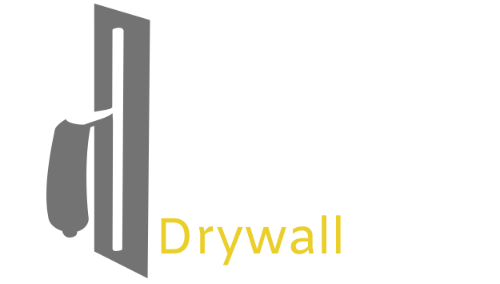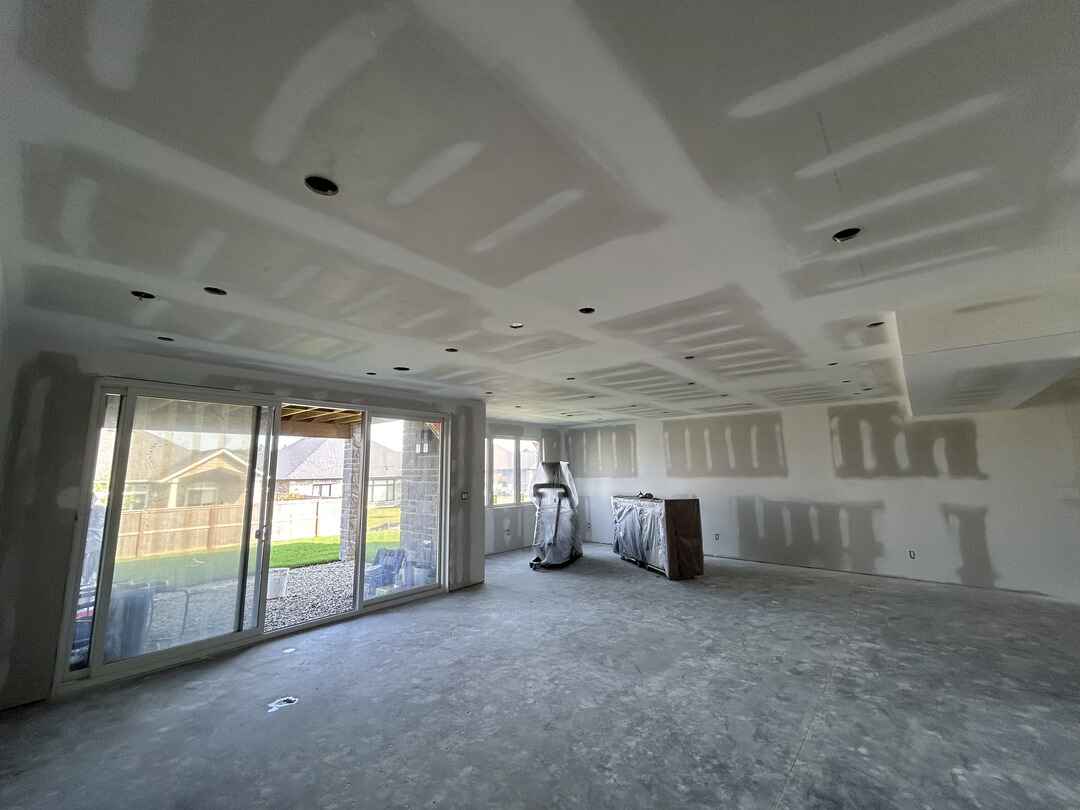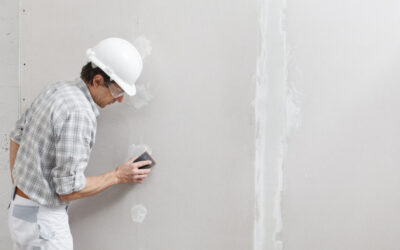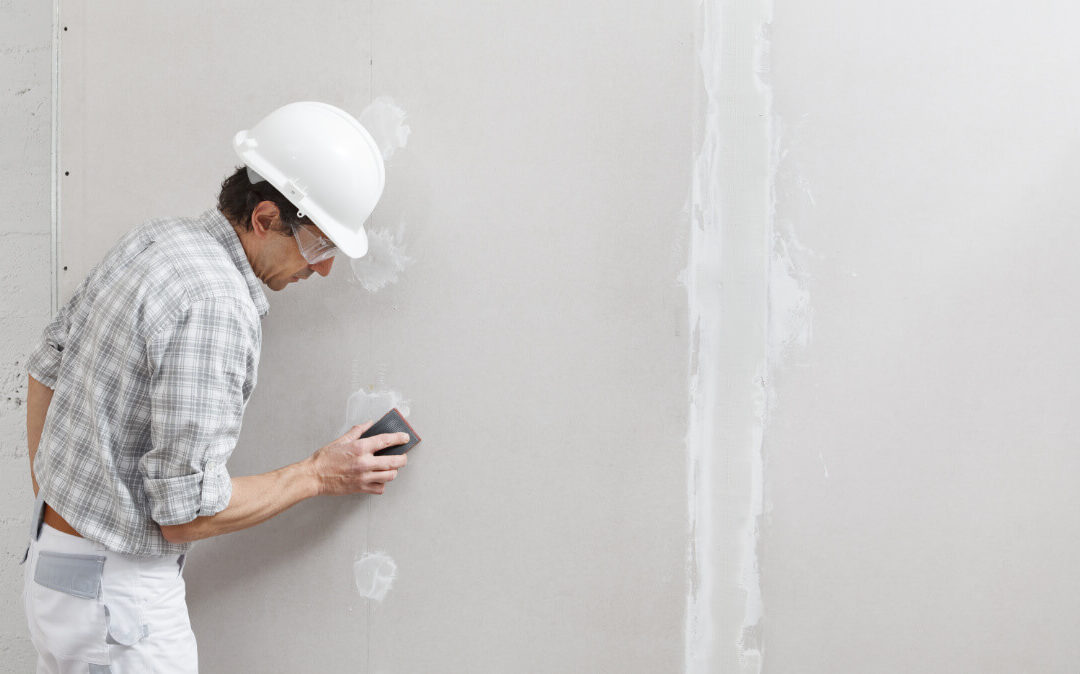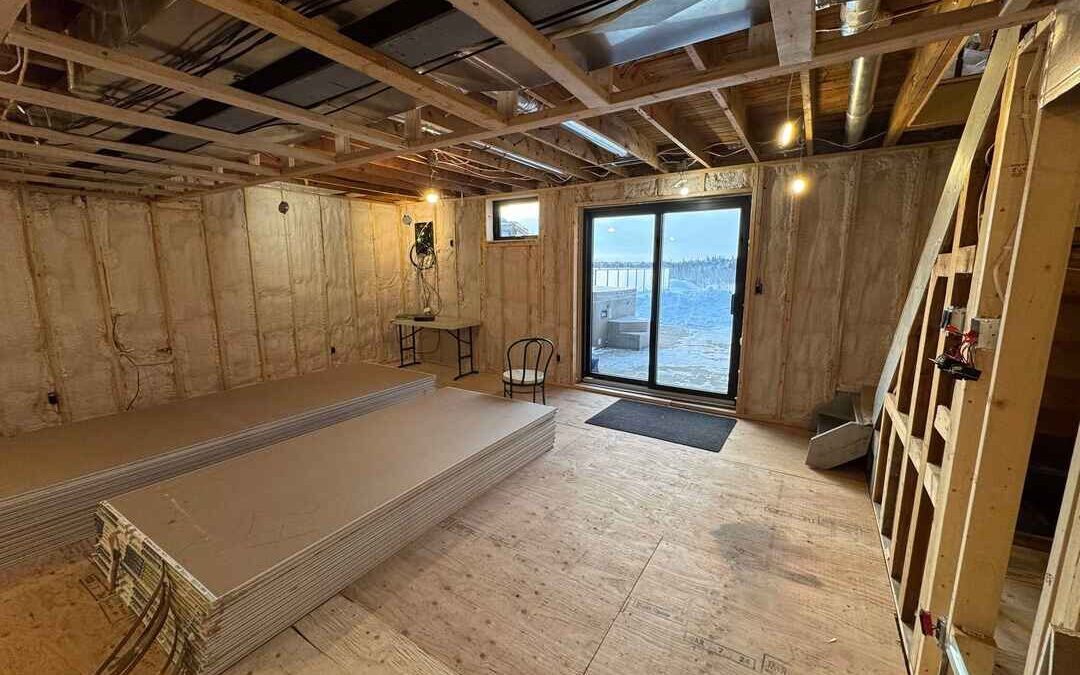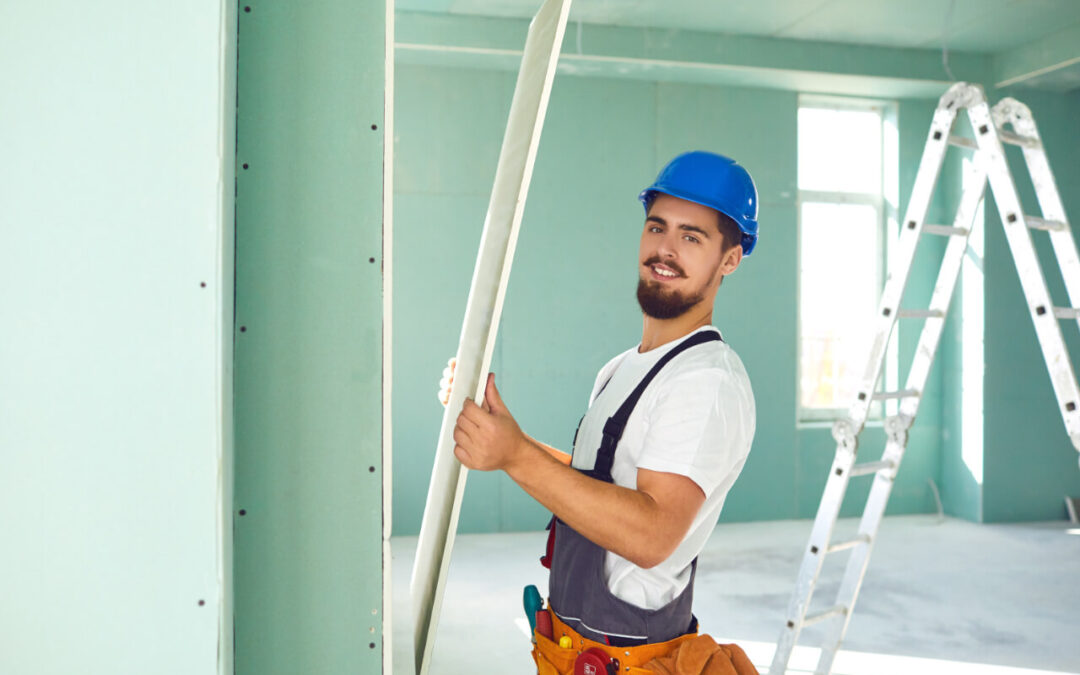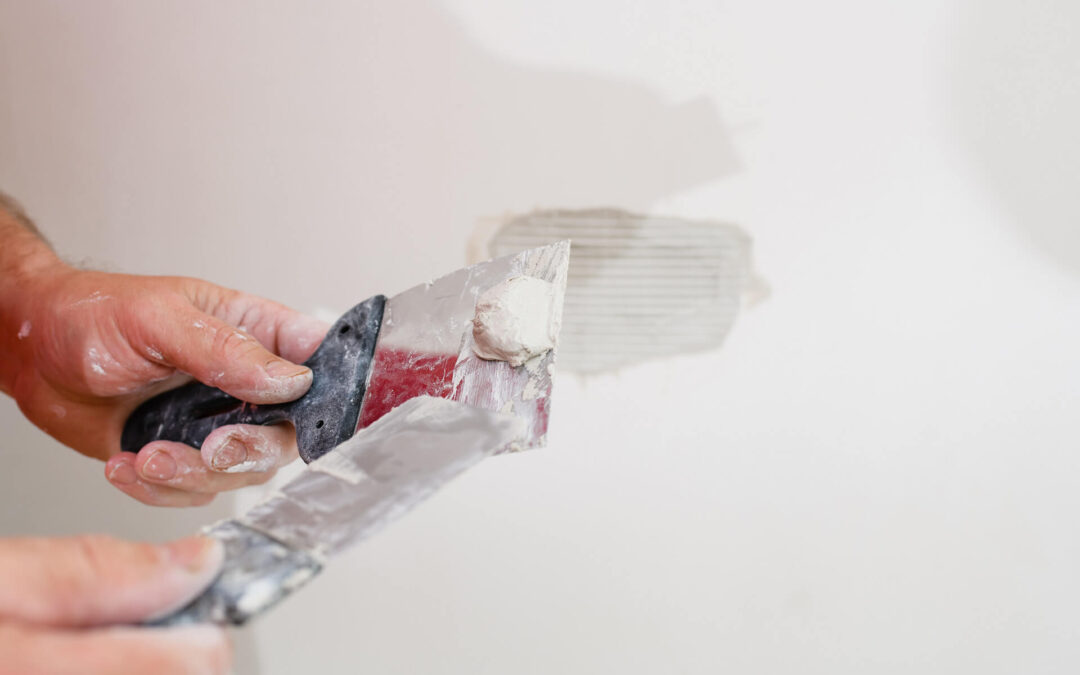Imagine turning your cold, damp basement into a cozy home theater, a vibrant playroom, or a productive home office. But an important decision must be made before picking out paint colors and furniture. Choosing the right drywall determines how well the space stays dry, comfortable, and free from mold for years.
Drywall is a popular choice for finishing basements because it is affordable, easy to install, and allows for design flexibility. Unlike other areas of the home, basements have higher humidity levels and a greater risk of moisture-related damage. Selecting the right type of drywall helps protect the investment and avoids common issues like mold growth, warping, and deterioration.
This guide breaks down different drywall options and helps in choosing the best one for specific basement needs. Moisture resistance, soundproofing, fire safety, and accessibility all play a role in creating a durable and comfortable space.
The Importance of Choosing the Best Drywall for a Basement
Drywall is widely used because it is affordable, easy to install, and provides a smooth finish. However, basements often have higher humidity levels, making drywall selection different from other areas of the home. Understanding which type works best helps create a space that stays dry, comportable, and safe for years.
Unique Challenges of Basement Environments
The Moisture Problem
Basements often have higher humidity levels because they are partially or fully underground. Moisture seeps through walls, floors, and foundation cracks, creating the perfect conditions for mold to grow. Poor ventilation can make the problem worse, leading to damaged drywall, unpleasant odors, and health concerns. Homes with excessive basement moisture may also see a drop in property value. Using moisture-resistant drywall helps prevent these issues and keeps the space in good condition.
Sound Transmission
Noise easily travels between floors, making basement soundproofing a common concern. Footsteps, conversations, and television noise from upstairs can disrupt the quiet of a basement office or bedroom. At the same time, sound from home theaters, music rooms, or workout areas in the basement can disturb people in other parts of the home. Drywall designed for soundproofing helps absorb and block unwanted noise, creating a more peaceful environment.
Fire Safety
Many basements contain furnaces, water heaters, and electrical panels, increasing fire risks. Fire-resistant drywall slows the spread of flames and meets safety codes in areas where extra protection is required. Using the right drywall improves overall safety and provides homeowners with added peace of mind.
Accessibility Issues
Getting drywall sheets into a basement is not always easy. Tight staircases, low ceilings, and narrow hallways can make large panels difficult to maneuver. Standard drywall comes in 8-foot and 12-foot sheets, with the larger size reducing the number of seams but requiring more space for installation. Homeowners with limited access points may prefer smaller panels, while professional installers often have the tools and experience to handle larger pieces efficiently.
Choosing the Right Drywall for a Basement
1. Standard Drywall (Regular White Board)
This type is the most affordable and commonly used in homes. It has a gypsum core with paper facing and works well in dry areas. However, basements tend to be humid, making standard drywall prone to mold and water damage. Using it in a basement often leads to expensive repairs later.
Related: Average Cost of Drywall Repair
2. Moisture-Resistant Drywall (Green Board)
This drywall has a water-resistant paper facing and handles moderate humidity better than standard drywall. While it provides some protection, it is not waterproof. Direct water exposure still causes damage, making it less ideal for basements with high moisture levels.
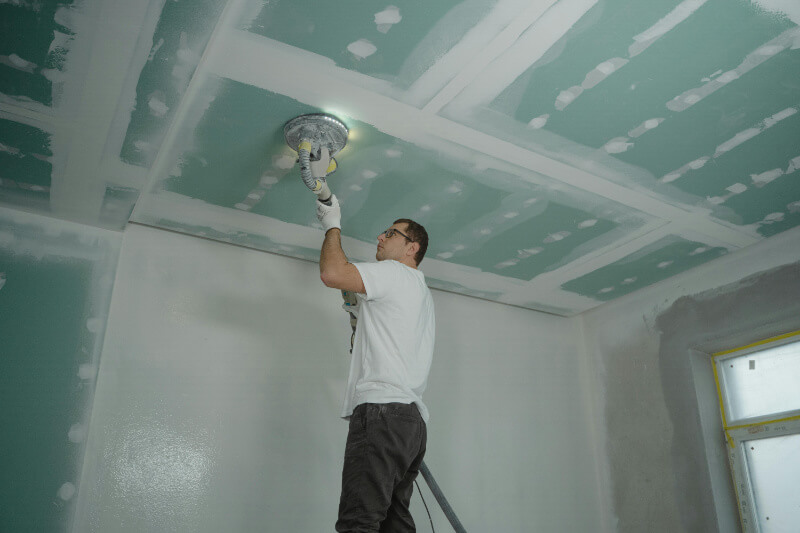
3. Mold-Resistant Drywall (Purple Board or Fiberglass-Faced Drywall)
Unlike green board, mold-resistant drywall has no paper backing, which prevents mold growth. A fiberglass-faced layer adds durability, making it an excellent choice for damp environments. Though it costs more compared to green board and standard, this drywall helps protect against long-term moisture issues.
4. Fire-Resistant Drywall (Type X)
Type X drywall is thicker and contains additives that improve fire resistance. Building codes often require it in areas near furnaces, water heaters, or other fire hazards. While it is not moisture-resistant, it provides added safety in a basement.
5. Soundproof Drywall
Soundproof drywall has extra layers and damping materials to block noise. Home theaters, music rooms, and offices benefit from this option. This type of drywallt significantly reduces sound transmission, creating a quieter basement environment.
Installation and Additional Considerations
Insulation is Key
Proper insulation plays an important role in basement projects, improving energy efficiency and helping control moisture levels. Before installing drywall, using the right insulation prevents condensation buildup and keeps the basement comfortable year-round. Some common basement insulation options include:
- Rigid Foam: Acts as a moisture barrier and provides thermal protection.
- Fiberglass Batting: Works well with framed walls but requires a vapor barrier to prevent moisture buildup.
- Spray Foam: Seals gaps and adds insulation while reducing the risk of moisture problems.
Vapor Barrier for Moisture Protection
A vapor barrier protects drywall from moisture by preventing water vapor from passing through walls and causing damage. Installation starts with placing the vapor barrier directly over the insulation before securing the drywall. The barrier should be sealed tightly at the seams and edges using tape or caulk to ensure complete moisture protection. Once secured, drywall panels are installed over the barrier, providing a durable and well-protected basement wall system.
Proper Framing for a Smooth Finish
Drywall framing ensures drywall sheets fit securely and remain even. Studs should be level and correctly spaced to prevent cracks and gaps. Well-built framing also makes it easier to install insulation and vapor barriers.
Sealing and Taping for Longevity
Mold-resistant joint compound and fiberglass tape help seal drywall seams, preventing moisture from penetrating. A smooth, professional finish reduces the chances of cracks and peeling paint. Using mold-resistant joint compound and fiberglass tape adds extra protection in damp environments. These materials help reinforce the drywall, ensuring the basement walls remain in good condition for years.
Choosing the Right Fasteners
Using the right drywall screws ensures a secure installation. Wood studs require different screws than metal framing, and correct screw depth prevents cracking and loose panels.
Related: Drywall Installation Cost
Making the Right Choice for a Basement Project
Choosing the right drywall for a basement protects the investment and ensures a comportable, durable space. Moisture-resistant and mold-resistant options work best in damp environments, while fire-resistant drywall adds safety in areas near heat sources. Soundproofing can enhance entertainment spaces, creating a quiet and enjoyable basement.
Homeowners looking for professional drywall installation can contact us for expert guidance and quality service. Our team at Grey County Drywall provides expert guidance and professional installation to ensure quality results. Call us today to discuss your project and get the best drywall solutions for your basement.
Related: Drywall Installation Guide
FAQ
1. What kind of drywall works best in a basement?
Mold-resistant and moisture-resistant drywall provides the best protection against basement humidity and mold growth.
2. Should drywall be used in a basement?
Yes, but choosing the right type prevents moisture damage and mold issues.
3. What is the best material for basement walls?
Drywall designed for moisture and mold resistance, combined with proper insulation and vapor barriers, ensures durability.
4. How do you install drywall in a concrete basement?
Framing must be built before installing drywall. Moisture-resistant insulation and a vapor barrier should be in place before securing the drywall panels.
5. What thickness should basement ceiling drywall be?
Ceilings typically use 1/2-inch drywall, but 5/8-inch provides better soundproofing and fire resistance.
